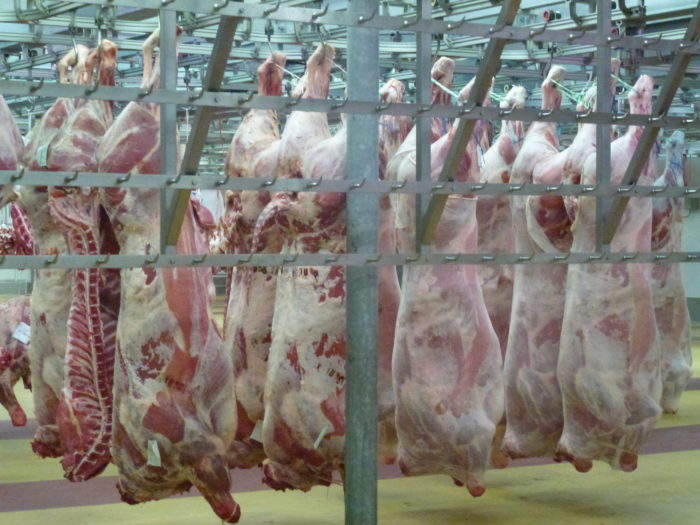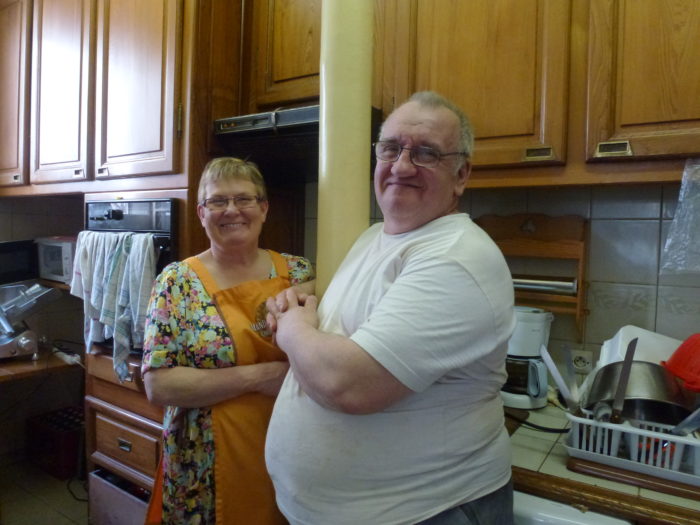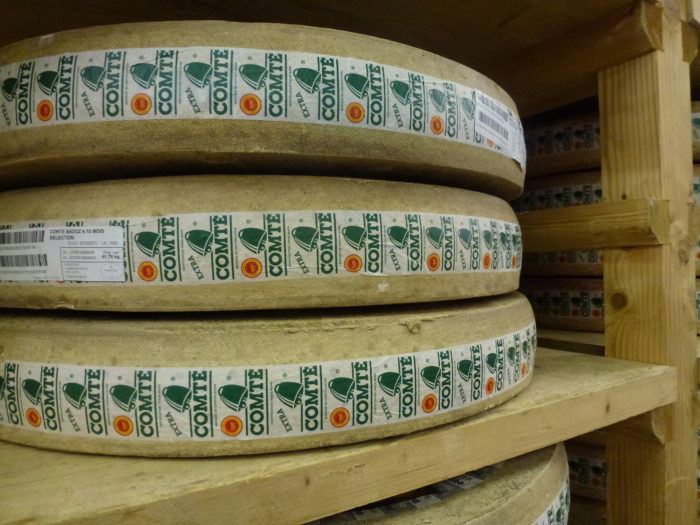June 13th – Day One
Am setting off to track the ingredients of food items made in cities around the world. The purpose is to better understand how cities are fed, mapping out the movements of ingredients from the origin of raw materials to the plate of the consumer. So, starting in Paris, with a simple ham and cheese baguette.
Slept all the way through the 10+hour flight to Munich and then on to Paris, arriving during a one-day taxi strike on a rainy day. Am staying in a small hotel, Hotel Verneuil, located on a quiet street on the Left Bank St. Germain des Pré district. After a quick shower, a strong espresso from the cozy, wood-paneled lobby, I headed off to meet Lauren Shields, my researcher who has been soldiering on through her list of contacts to set up appointments for me during my visit.

Lauren is an American, born in Montana, studying international food policy at a French university. She graduated a few weeks ago and is now on the hunt for a job somewhere in the European food policy universe. She met me for tea at the Comptoir des Pères, where we talked about our plans for the next few days as I sipped a tisane and she a “noisette,” an espresso with a small pitcher of hot milk on the side. We talked for two hours, and developed a list of ideas, places to visit, and some questions. Such as, “Why don’t Parisians talk about locally food? Perhaps it’s because they think of all of France as their backyard, and thus all food produced in France as local.
June 14th – Market Day
Tumbled out of the hotel at 4:30am for a tour of Rungis Market, one of the largest wholesale food markets in the world located southwest of Paris. As the sun rose, we entered the Fish Hall, lights glaring, floor shimmering wet, and white Styrofoam boxes for the length of the icy-cool space. A display market, meaning that buyers and sellers see the fish, touch the merchandise, and settle on prices rather than purchase catches through an online auction system such as buyers in Boston. During the 1960s, Rungis replaced the famous and historic Les Halles market in central Paris, the site of Emile Zola’s novel The Belly of Paris.
The only way to officially see the market is to join tour or be a buyer. I joined a tour and was stunned (difficult at 4:30am) to find a large tour bus packed with tourists from all over the world who rallied early and paid to see a wholesale food market. Would anyone in New York get up at 5am and get in a tour bus to visit Hunters Point? Doubt it, but that might change.
We spent five hours walking through buildings that contained fish, beef, chickens, offal, vegetables, fruit, cheese, and more, much of which was contained in 40-degree Fahrenheit temperatures. The market is so big that the tour buses drive from one building to another, winding through trucks and forklifts that are trying to get business done before the market closes. And our group, like all the other touring groups, wandered wearing the required hairnet and white coats, making us look like clueless inspectors, pointing and asking questions that the vendors had answered at least a dozen times that morning.
The professionals in the market did not seemed annoyed with us, as we blocked traffic, got in the way of carts moving produce out onto waiting delivery trucks, and pointed cameras into the boxes of fish, meat, and chickens. The star attractions included the chickens with their heads looped around their carcasses, large bloodied beef hanging along with a photo of the animals when they were alive, tranquilly grazing in their home pasture, cases of foie gras, and piles of detached pigs feet, stomachs, and calves brains. Pretty tough going for a pre-breakfast visit.
In spite of all the fresh and glory food, the halls were amazingly clean, stainless steel gleaming, and floors immaculate with the exception of a few drops of blood left by those animals hanging unsold by the end of the market day.

More details of the market will be forthcoming, but to give you a flavor of the morning visit, here are some samples of what awaits you should you decide to become a wholesale market tourist in Paris.
June 15th – Say Cheese
Sounds simple, yet Parisians just can’t tell us what kind of cheese they use to make their traditional “jambon/fromage,” or baguette with ham and cheese sandwich. I’ve been asking Parisians now for almost a week and each person declares with absolute conviction that the cheese is Emmanthal. No, actually, it’s Gruyere. Oh, wait. It’s Comte cheese.
The ham is another story, but one that exacts almost a sense of apathy, which for a Parisian seems out of character. The ham used for the sandwich is sometimes call Jambon de Paris, or Parisian ham, but is really just a simple boiled ham, not tied to any location or terrior, which in other cases is the Parisian claim to culinary authenticity.
Same for the bread. The baguette has no geographical identity, other than all of France, and comes in various combinations of flours. The only exactitude required is the government regulation for the combination of ingredients: flour, water, salt. The French state has had its hands in bread at least since Louis XV (1710-1774).
The temperamental French view of the cheese in their iconic sandwich led me down some blind alleys. Such as one at the end of a trip to the Jura, Comte region south of Paris to investigate the source of Comte cheese. The tour guide of the Comte cheese center proclaimed the excellence the forty-pound rounds of gruyere-like cheese, including the astounding fact that only one breed of dairy cow is allowed to make the cheese, the Montbéliarde. The cheese, while creamy and, depending upon its age, nutty, turns out not to be the cheese of choice for the “jambon/fromage.”
Two days later, the consensus is that it is Emmental, a Swiss cheese, is the traditional cheese eaten by most Parisians in this sandwich. For now, am running with the holy cheese, finding what French company is making the Swiss cheese for the French sandwich.
June 17th
The Sandwich: Jambon/Fromage
Tracking down a sandwich is my mission, this one in Paris, and made by the Martin family in the 10th arrondissement. By tracking down the ingredients for one sandwich, made by one shop, makes the task of understanding how Paris gets fed manageable, although still confusing and complicated. Ingredients for one food item at one location often change from one day to another; bakers buy their yeast from the best supplier at the most reasonable cost, for example.

The vagaries of supply chain dynamics means that you can’t track down all ingredients for all sandwiches made by one baker, but simply one made at one time on one day. Thus the challenge. And the opportunity.
So the tracking began today and thankfully, our bakers were all in, happy to share their shop, ovens, and interest in the adventure. They hauled out flour sacks, tubs of salt and yeast, and labels from packaged ham and cheese. Yes, Emmental. Next step: find those supply chain delivery trucks, the ham processor, cheesemaker, and yes, the cows and pigs.


Author